#108 in Vietnam
Cơm Rượu: Basic Information
Pronunciation
Alternative Name(s)
Dish Type
Course
Mealtime
Popular Cơm Rượu Variations

Rượu Nếp Đục (or nếp sữa)

Rượu Nếp Than

Rượu Nếp Cẩm
Cơm Rượu: Ingredients and Preparation
Main Ingredients
Main Cooking Method
Preparation Process
Cơm Rượu: A Deep Dive
Cultural Significance
Taste
Texture
Aroma
Color
Serving Style
Serving Temperature
Accompaniment
Occasions
Seasons
Special Diets
Calories
Popularity
Popular Similar Dishes
- Jiuniang
- Sikhye
- Amazake
Popular Dining Area
Cơm rượu is a sweet and slightly alcoholic Vietnamese dessert that originates from Southern Vietnam. It’s made by fermenting cooked glutinous rice with a special yeast that causes the rice to form into small, chewy balls.
These rice balls are then immersed in a milky, sweetened liquid that has a mild alcohol content, resulting from the fermentation process.
The dessert is traditionally served with a spoon and enjoyed for its unique texture and the gentle buzz from the alcohol content.
Cơm rượu (Vietnamese fermented rice) varies in form based on regional characteristics. In the North, it’s made from black glutinous rice, a common ingredient in the Northwest. Central Vietnam typically presses it into blocks, while in the South, it’s rolled into balls.
However, regardless of the form, cơm rượu is traditionally consumed during the Tết Đoan Ngọ festival as it is believed to help expel parasites from the body.
Additionally, cơm rượu is usually paired with xôi vò, and xôi vò – cơm rượu has evolved from a ceremonial food into a familiar daily snack and an interesting breakfast choice.
I will guide you through the dish’s unique features, key components, preparation method, advantages and disadvantages, frequently asked queries, and dishes with similar traits.
Key Points
Cơm Rượu Images
What Are the Essential Ingredients for Cơm Rượu?
The ingredients listed are for making a traditional Vietnamese fermented rice wine, often called “rượu nếp”:
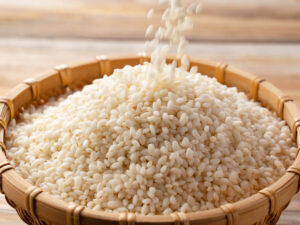
Sticky Rice or Glutinous Rice
Varieties like nếp cẩm (black glutinous rice), nếp cái hoa vàng (golden flower glutinous rice), or the best choice being gạo nếp lứt (brown glutinous rice), which is unpolished with a brown-yellow color, retaining the rice bran.
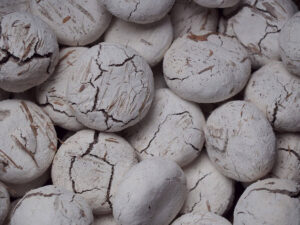
Yeast
This is made from a variety of herbs with spicy and warm properties, formed into small cakes and fermented until they expand and transform into a form of fungus.
Depending on the artisan and their unique secrets, yeast can be made from different ingredients (commonly galangal, licorice root, green guava leaves, Chinese herbs, etc., which are finely ground, mixed with rice flour and rice husk)

Leaves
Optional: longan, banana, or guava leaves to line the fermentation container and cover the rice.
Each ingredient plays a crucial role in defining its unique flavor and texture in the artful making process of this traditional dish
How To Make Cơm Rượu?
Below is the traditional process for making cơm rượu. The process involves several steps:
Step 1: Rice Preparation
Soak, drain, and steam rice to make sticky rice. Cool it quickly to separate grains, then steam again for a softer texture.
Step 2: Yeast Addition
Sieve fine yeast powder, remove husks, and sprinkle it evenly over the sticky rice. Adjust the rice’s temperature according to the weather (warm in cold weather, cool in hot weather).
Step 3: Fermentation
Place leaves at the bottom of a container, add the yeast-mixed sticky rice, cover with more leaves, and seal tightly. Keep in a warm place (25-35°C) for 1-2 days until it starts to smell like alcohol.
Step 4: Maturation
Leave the mixture to ferment for 3-5 days, depending on the weather, to allow alcohol production from the rice sugars.
For stronger wine, some variations involve adding yeast three times and fermenting for about 10 days, then adding distilled liquor and extracting the liquid, discarding the solids.
This process results in different Vietnamese fermented rice wine variations with varying strengths and flavors.
How Many Types of Cơm Rượu Are There?
Below are 2 main types of cơm rượu with the main ingredient being fermented sticky rice:

Rượu Nếp Đục (or nếp sữa)
It is made from rượu nếp cái with added distilled rice liquor, then filtered through a cloth to remove solids, resulting in a cloudy white liquid.
Each type of cơm rượu features its distinct visual appeal and taste profiles, highlighting the diversity and pros and cons inherent in the varied preparation methods.
Pros and Cons of Eating Cơm Rượu
Below are the pros and cons of cơm rượu that are worth your consideration:
Pros
Cons
Also, be sure to check out the frequently asked questions about this dish.



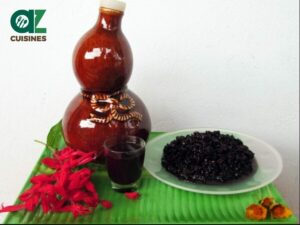

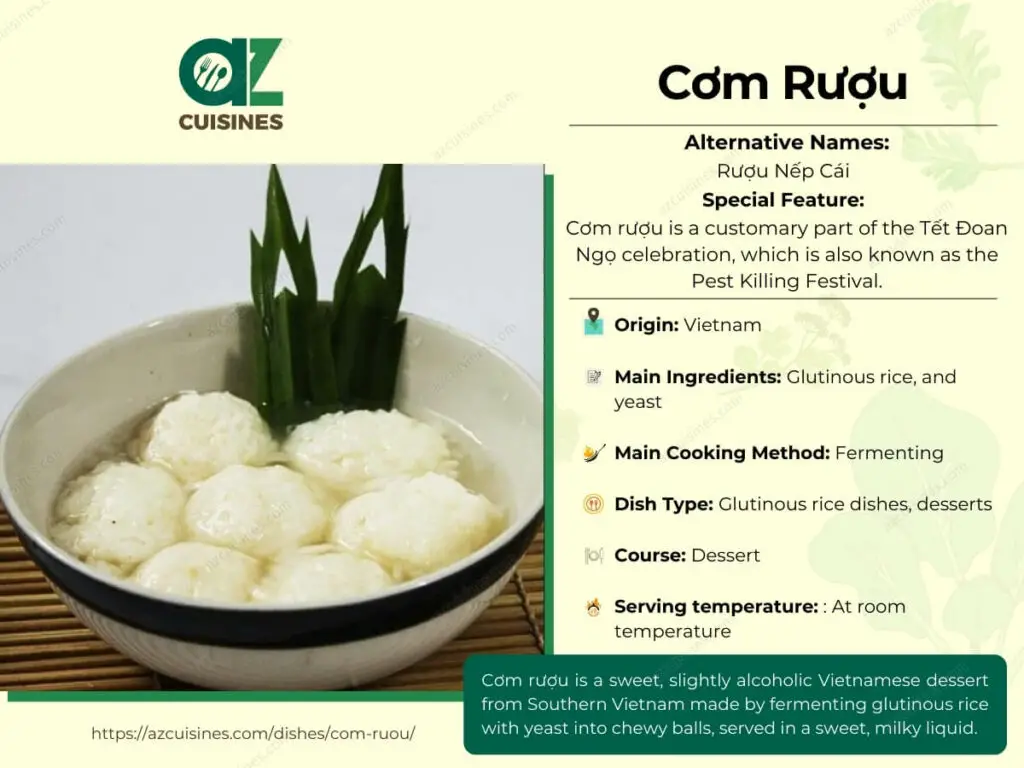



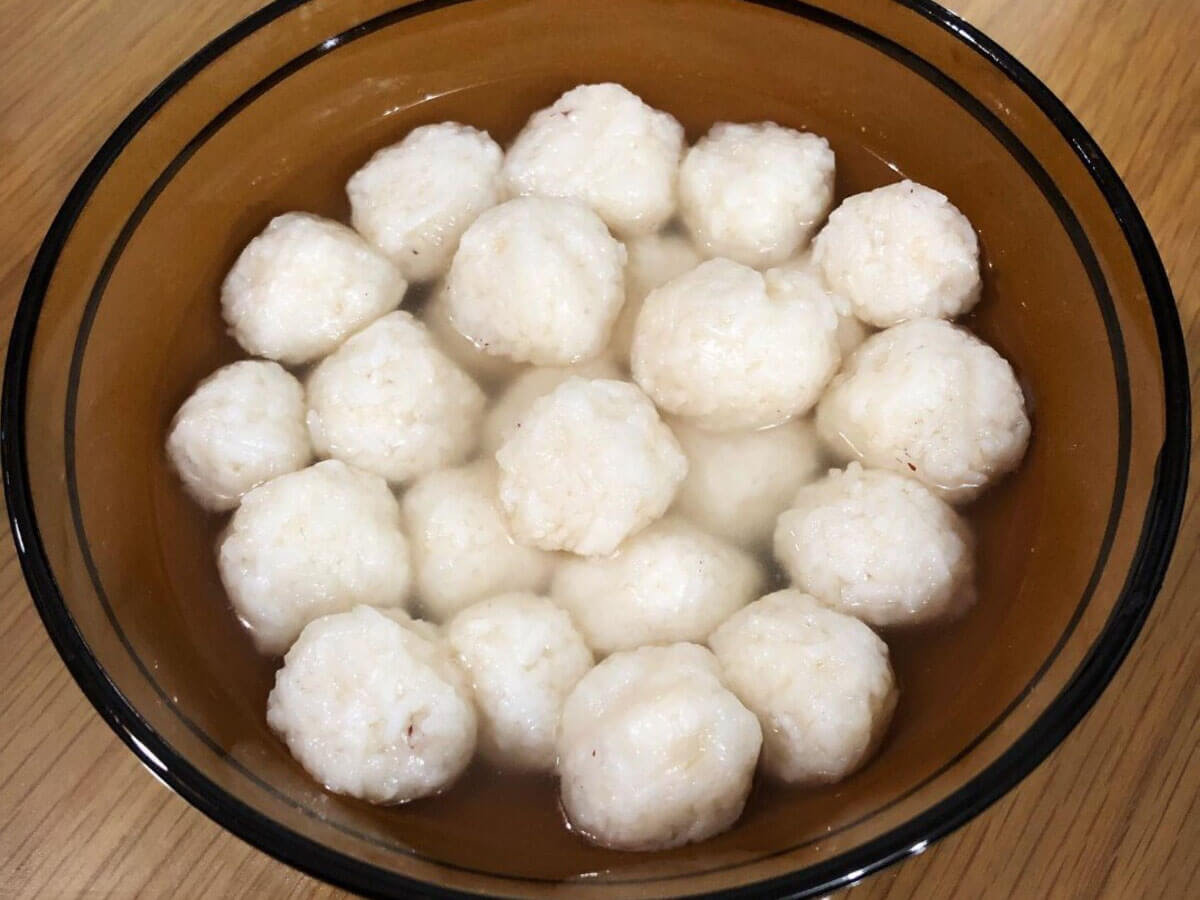

Truc Tran (Kris)
Senior Food Editor
Expertise
Home Cooking, Meal Planning, Recipe Development, Baking and Pastry, Food Editor, Cooking-video Maker, Vietnamese Food Evaluation Expert
Education
Truc Tran (Kris), an experienced food writer and editor, is great at exploring and describing global cuisines, from simple street food to fancy dining. In her writing, she skillfully mixes different flavors, cooking methods, and culinary traditions, showing the unique character of various cultures through their food and drinks. On azcuisines.com, Kris highlights her knowledge, especially in Asian cuisine and worldwide traditional dishes.